LiDAR (Light Detection and Ranging) technology empowers computers and sensors to 'see' the world in three-dimensional (3D) propositions. LiDAR uses laser beams that are safe for human eyes to represent the surveyed surroundings accurately.
The laser beams emitted by a typical LiDAR sensor hit the objects in the surroundings, bounce off from them, and get back to the sensor. The LiDAR sensor calculates the time each pulse takes to return to the device and works out the distance traveled by each pulse. The sensor repeats this process millions of times per second to create an accurate 3D map of the real-time surroundings known as a point cloud.
An onboard sensor can utilize this point cloud for safe navigation. Navigation is the typical application of LiDAR technology, and a wide variety of applications are using this technology today. Interactive displays are one among them.
The Arrival of Interactive Displays
Traditionally, we have used blackboards and whiteboards for teaching, learning, or interactive purposes. Markers or chalk are used to write on these boards, while dusters or erasers are used to clean up the board. Unfortunately, these markers, chalks, dusters, and erasers make a mess most of the time. Moreover, these boards are not durable and easily movable.
One of the solutions to this problem appeared in the form of interactive displays. An interactive display is a mounted Liquid Crystal Display (LCD) or Light Emitting Diode (LED) display device that allows users to carry out visual presentations using touchscreen technology.
Interactive displays come in various sizes and are suitable for small classrooms to larger corporate boardrooms. With the widespread use of smartphones, most business and educational professionals are leveraging the power of interactive displays to help them conduct interactive personal communication on a broader scale.
The size of the global LiDAR market was valued at around $1.50 billion in 2021. The market is expected to grow at a Compound Annual Growth Rate (CAGR) of around 19.30% and reach nearly $7 billion by 2030.
LiDAR And Interactive Displays
LiDAR technology promises a future where touch screens no longer need to be ‘touched’! This may seem unfeasible, but it is not. LiDAR sensors create a motion sensing field, similar to the LiDAR in navigation systems of self-driving cars. This enables the user to interact with the screen by swiping, pulling, pushing, and tapping on air.
Through 3rd party software integration, the LiDAR models like UST-10LX, -20LX and -30LX from Hokuyo offer a universal gesture-based interactive screen control that works with any display device.
Combining these LiDAR devices and a projector can also create a touchscreen wall. It is used for interactive teaching and advertisements in airports and malls where a large screen is needed. This touchscreen wall is also easy to use and movable. It is durable, uses little space, and is cost-effective.
Touch screens can only handle a limited number of touches at a time. On the other hand, you can make unlimited touches simultaneously on a touchscreen wall. A wall of any size can be used as a touchscreen wall.
You can also create a touch screen without a projector. In this case, a combination of LiDAR and television (TV) will do the job. Place the LiDAR sensor below the TV screen, and the touch screen is ready. You can interact with the objects on the screen with your finger, pen, or stick.
How Does It Work?
The purpose of the LiDAR sensors is to detect obstacles in their path, and they do it by emitting laser beams. After hitting the obstacle, the laser beam will get reflected and captured by the LiDAR sensor.
This reflected laser beam would provide information about the location and movement of the object, be it a finger or stick, to the computer connected to the projector and LiDAR. The computer analyzes the coordinates and sends the results to the projector. Finally, the projector displays it on the wall, enabling viewers to watch and interact with it.
Interactive Displays: An Innovative Application of LiDAR
The impact of LiDAR technology in interactive displays opens the door to a future where our interactions with digital interfaces become more intuitive, effortless, and transparent. You don’t need to grab a mouse to move a cursor and make a click or scroll.
This freedom from interactive devices is beneficial in various ways: you can scroll through recipes with your dirty hands, do presentations with style and clarity, and discover new ways to play games. It also gives the freedom and power to physically challenged users to carry out digital tasks quickly.
Check out our range of LiDAR sensors.

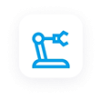 Factory Automation
Factory Automation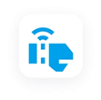 Logistics Automation
Logistics Automation Process Automation
Process Automation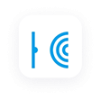 Crane Collision Avoidance
Crane Collision Avoidance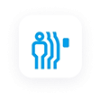 LiDAR/Obstacle Detection
LiDAR/Obstacle Detection Safety Laser Scanners
Safety Laser Scanners Optical Data Transmission
Optical Data Transmission Hot Metal Detectors
Hot Metal Detectors Laser Distance Sensor
Laser Distance Sensor Blog
Blog Whitepapers
Whitepapers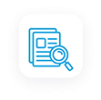 Case Studies
Case Studies Infographics
Infographics